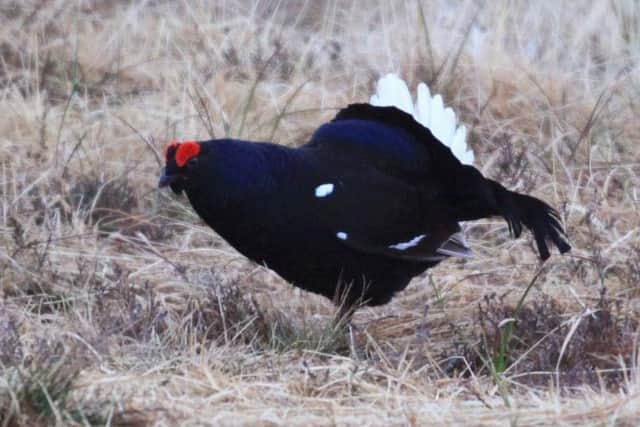New efforts to save Scotland's rare black grouse
Cash generated by wind farms will be used to help safeguard the threatened species, which is the fastest declining bird in the UK.
Research shows populations of black grouse have crashed dramatically in recent years, raising fears they could end up in the same predicament as their larger cousin the capercaillie – which is facing imminent extinction in Scotland
Advertisement
Hide AdAdvertisement
Hide AdBlack grouse were once widespread across the UK but are now on the IUCN Red List of threatened species.


Estimates suggested there were around 380 males living in south-east Scotland in 2011, but that figure had plummeted to 78 survivors just seven years later.
Now efforts are being stepped up in a bid to help protect the birds’ habitat in the Borders region.
A grant of £9,500 has been awarded to the Southern Uplands Partnership to monitor black grouse over the next two years.
The work will allow mapping of key lekking sites, where male birds strut and display their feathers during annual courting rituals.
The information will be used to help ensure future developments in the area, such as new forest planting and wind farms, do not jeopardise the most important habitats for the iconic species.
Pip Tabor, partnership manager for the Southern Uplands Partnership, said: “The lekking rituals of this charismatic upland species are one of nature’s great spectacles, however black grouse populations in the south of Scotland remain extremely vulnerable.
“The funding for this new survey will enable us to ensure that new plantations take key black grouse habitat into consideration and ensure that we don’t see further erosion of this important species.”
Advertisement
Hide AdAdvertisement
Hide AdStudies suggest a balance between open moorland and woodland at key locations is essential for black grouse populations to thrive.
The survey data will be particularly important with regard to the ongoing expansion of conifer plantations across the Southern Uplands.
While newly planted commercial woodlands can provide excellent black grouse territory, the birds are displaced once the tree canopy closes and shades-out their favoured ground vegetation.
To assist the survival of Black Grouse populations in these forested landscapes, interconnected areas of suitable moorland need to be retained.
A message from the Editor:
Thank you for reading this article. We’re more reliant on your support than ever as the shift in consumer habits brought about by coronavirus impacts our advertisers.
If you haven’t already, please consider supporting our trusted, fact-checked journalism by taking out a digital subscription. Visit https://www.scotsman.com/subscriptions now to sign up.
Comments
Want to join the conversation? Please or to comment on this article.